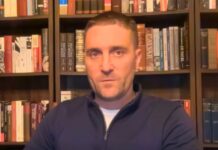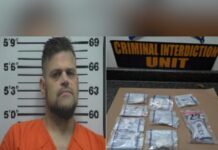WVU President Michael Benson’s Stunning Wheeling Exploration
WVU President Michael Benson’s stunning Wheeling exploration marks an impressive and insightful journey that showcases his commitment not only to West Virginia University but also to the broader communities throughout the state. This visit exemplifies how university leadership can actively engage beyond campus boundaries, fostering meaningful connections and sparking new opportunities for collaboration, growth, and regional development.
Embracing West Virginia’s Rich Heritage through Wheeling Exploration
Wheeling, a city steeped in history and culture, provides a unique backdrop for an educational leader’s visit. Known for its significant role during the formation of West Virginia and its position as an industrial and cultural hub, Wheeling offers numerous layers of heritage for visitors like President Benson to discover. His exploration reflects a genuine interest in understanding the history and identity of the communities WVU serves, bridging the gap between academia and local culture.
During his time in Wheeling, President Benson dived into the intricate stories of the city’s past—from its early days as a frontier fort to its influential status in the steel and glass industries. This exploration helped him appreciate the resilience and innovation embedded in the region, qualities that resonate deeply with WVU’s mission of fostering leadership and transformative learning.
Connecting with Local Leaders and Community Members
One of the standout aspects of President Benson’s Wheeling visit was his effort to connect with local leaders, business owners, educators, and residents. These meetings offered a platform for dialogue about the challenges and opportunities facing Wheeling and its surrounding areas.
By engaging in roundtable discussions and community forums, President Benson demonstrated WVU’s dedication to listening and responding to the needs of the people. Such interactions are vital for aligning the university’s resources and expertise with community priorities, whether that involves workforce development, healthcare access, or educational outreach programs.
This approach not only builds trust but also paves the way for innovative partnerships that can stimulate economic growth and enrich social infrastructure. President Benson’s willingness to listen and learn from local voices underscores the university’s role as a catalyst for positive change in West Virginia.
Inspiring Students through Real-World Connections
WVU President Michael Benson’s stunning Wheeling exploration isn’t just about community engagement on a macro scale—it’s also a powerful example for students. By seeing their university president immerse himself in local history, culture, and current affairs, students are encouraged to recognize the importance of civic involvement and leadership.
Such firsthand experiences can inspire young people to pursue careers that contribute meaningfully to their state and communities. Moreover, they highlight the value of interdisciplinary approaches to problem-solving, as issues like economic revitalization, public health, and environmental sustainability often require collaboration across multiple fields of study.
President Benson’s visit sends a message that learning doesn’t happen solely in lecture halls; the rich classroom of everyday life in West Virginia’s cities and towns offers endless educational opportunities that are crucial for developing well-rounded, socially conscious graduates.
Promoting Economic and Educational Development in Wheeling
Economic revitalization remains a priority for many West Virginian communities, including Wheeling. President Benson’s exploration served as a strategic avenue to identify areas where WVU can contribute toward sustainable development. From supporting local businesses with research and innovation to expanding educational programs tailored to regional workforce needs, the university’s potential impact extends beyond its main campuses.
Collaborations forged during the visit could lead to initiatives such as internships, cooperative education programs, and joint projects that boost job opportunities and skill-building. In addition, partnerships with healthcare providers and social service organizations might enhance public well-being, reflecting WVU’s comprehensive commitment to community health.
By aligning academic resources with community goals, President Benson’s Wheeling engagement epitomizes how university leadership can drive holistic growth for both students and residents.
A Vision for the Future: Continuing Community Engagement
The visit to Wheeling exemplifies a broader vision that President Michael Benson holds for WVU—one rooted in active community engagement, responsiveness to regional needs, and fostering inclusive growth. This exploration sets a precedent for future outreach efforts across West Virginia, encouraging university officials, faculty, and students alike to seek deeper connections with the people and places beyond campus.
Such sustained engagement promises to enhance educational experiences, promote local development, and reinforce the university’s identity as a vital partner in the state’s progress. President Benson’s example challenges the perception of universities as isolated institutions and rather highlights their essential role as collaborators and leaders within their communities.
Conclusion
WVU President Michael Benson’s stunning Wheeling exploration is more than a simple visit; it embodies a dynamic interplay between education, heritage, community, and leadership. By immersing himself in Wheeling’s rich history, engaging with local stakeholders, and envisioning practical collaborations, Benson illustrates the transformative influence of university leadership committed to statewide connection and service.
This exploration not only benefits Wheeling and its residents but also strengthens WVU’s mission of cultivating knowledge, innovation, and community well-being throughout West Virginia. It stands as a compelling reminder that the power of education lies in its ability to extend far beyond the classroom into the heart of every community it serves.






